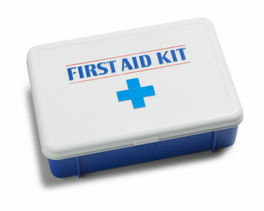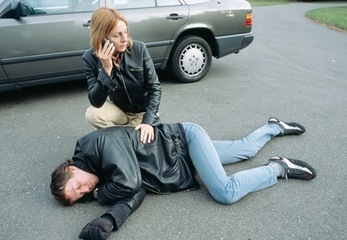_With kids around, you never actually know when an incident may happen. So emergency awareness and preparedness is very important as it can At times help you save life. You should know essential first aid to help the child, in particular if there are no hospitals or medical practitioners nearby for medical help.
To administer first aid to a kid, you first have to have a kids' first aid kit prepared at all times. In fact, no matter if you have a kid at home or not, you need a kit at home as you never ever know when minor emergencies arise. A typical kids' first aid kit should contain
1. Adhesive bandages of various sizes to deal with all injuries
2. An antibiotic cream to stop infection in cuts and scrapes
3. A burn ointment that prevents infections in minor burns up
4. A cleansing representative like a cleaner, soap and antibiotic towelettes to disinfect an injury
5. An eyewash solution for flushing eyes in case of contamination and for relieving pain and swelling in an allergy
6. Sterile dressings and gloves to stop excessive bleeding and for safety reasons
7. Some prescription medication for treating pain, cold, inflammation, pain, nausea and diarrhea. However do keep checking its expiration dates that you can no longer use.
It's not enough to just have a first aid kit around; all grown ups in your home should know how to deal with minor injuries in kids like cuts, minor melts, scrapes and minor incidents. With his knowledge, you should not only be able to take care of minor injuries, but you should also be able to stabilize the more serious ones till professional medical help arrives.
Instead of preparing your own kids first aid kit, you can buy ready-made ones on the net or from drug stores. However it is generally better to make your own kit as there is no set common for these ready-made ones. So you may not get all of the things required in a first aid kit if you buy these kits.
_Two considerations for buying a first aid kit are the location that the kit will be kept ready for use in, and pricing. The location is important as first aid kits are often specialized for use at home, traveling, or in a car. Pricing a first aid kit is particularly important because normal considerations of cheapness versus quality man not apply.
With first aid kits, quality should carry more weight than a low price. A first aid kit contains medical equipment and supplies that may well end up being used to treat a loved in the event of an accident or emergency. Additionally a good kit will last longer and cost less to maintain.
This is because a good quality first aid kit comes in a bag that is durable and waterproof. Waterproofing is important for preventing contamination of the kit’s sterile medical supplies like bandages and wound dressings. When it comes to waterproofing, you will get what you pay for.
A cheap first aid kit will also use cheap medical supplies. That typically means low-quality packaging, which is something that you do not want for sterile bandages and medical gauze pads that go on open wounds. If the packaging is compromised, these items can no longer be used and must be replaced immediately.
A good quality first aid kits will also be put together with a particular environment or set of circumstances in mind. For example, a normal home first aid kit typically contains supplies adequate to treat minor injuries and relieve the symptoms of normal illnesses. A first aid kit put together for disaster or home emergency preparedness, however, will be larger and stocked for stabilizing serious injuries. Meanwhile, travel kits are put together with the space and weight constraints of luggage or backpacks in mind. Kits within the travel class may be further specialized between conventional travel and travel kits for remote destinations.
Picking out an appropriate first aid kit does not have to difficult or nerve wracking. Looking at the environment that it will be used in and considering quality against price will help to simplify the process of choosing a good first aid kit.
|




 RSS Feed
RSS Feed